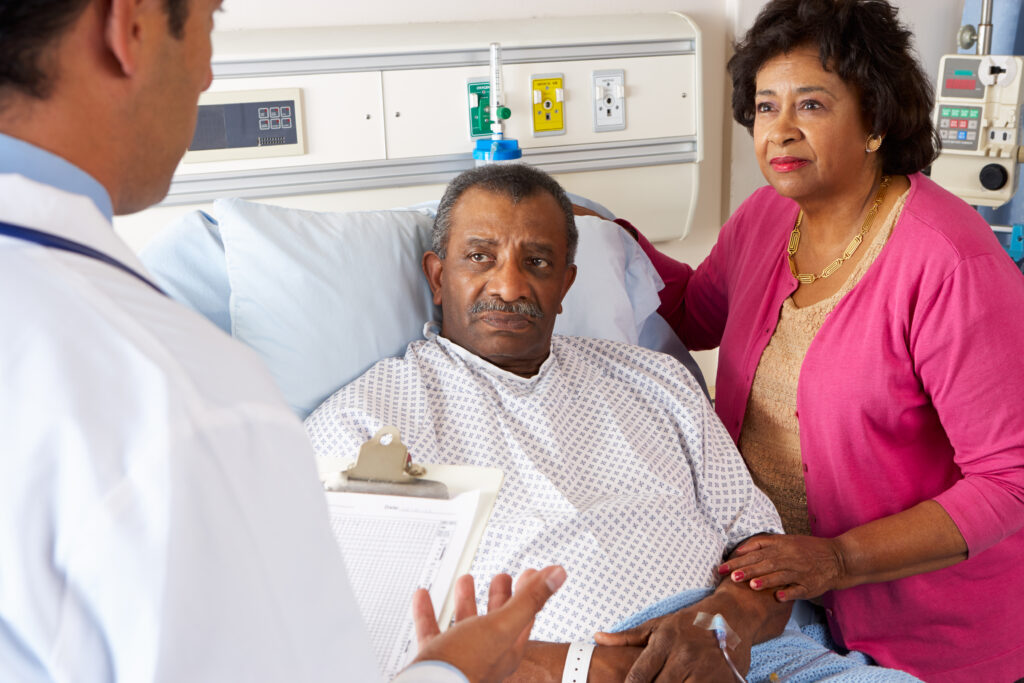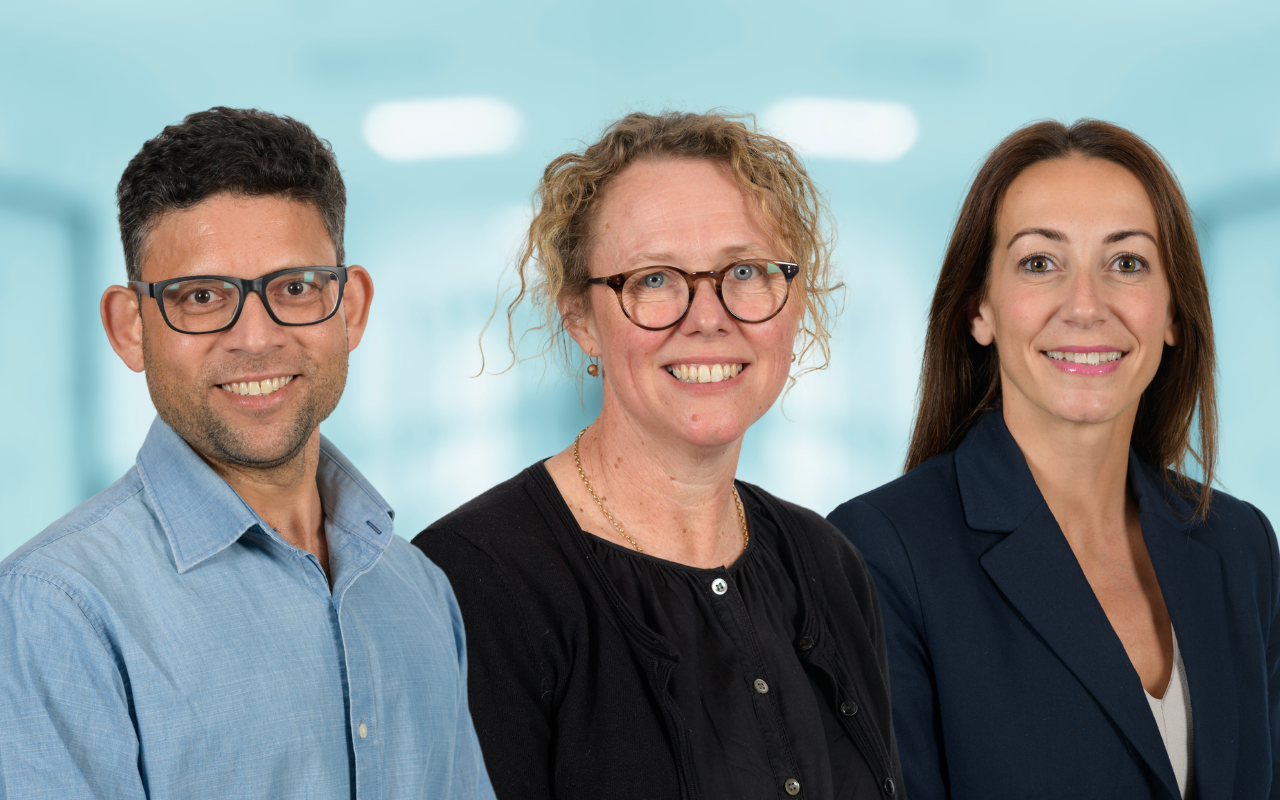Patients from culturally or linguistically diverse backgrounds are at a higher risk of experiencing harm during health care, highlighting the need for clinicians to adapt their approach to better engage with these patients.
Clinicians across the globe will mark the World Health Organization’s World Patient Safety Day with a focus on its theme of “Engaging patients for patient safety”. The theme recognises growing evidence that patients who are informed about, understand, and are able to contribute to their care are less likely to experience harm during health care. For some patient cohorts this is more challenging than for others, such as for people who face language or cultural barriers to participation in their care.
Incidents of patient harm can range from relatively minor to, in some rare cases, fatal. They occur in one out of every ten encounters with the health system and can range from problems with medication, delayed diagnosis, or errors during surgery. Such incidents occur across all levels of health care from primary care to specialist and hospital settings. The WHO global initiative aims to improve the safety of patients by raising awareness of the need for patient engagement.
A recent systematic review of 45 studies from nine countries, including the United States, the United Kingdom, Australia and Canada, demonstrated that patients from culturally or linguistically diverse (CALD) backgrounds are at a higher risk of having a patient safety incident in primary, secondary and community settings.

For this community, incidents commonly include being given incorrect medications or doses, surgical complications, and hospital-acquired infections.
The higher rate of patient safety incidents has been further reported in our medical record review of patients in Australian cancer services across New South Wales and Victoria. Patient safety incidents were identified in 25% of records of CALD patients compared with around 10% in the general population.
This same review showed that a key contributor to the increased exposure to patient harm that resulted from delayed, inappropriate or missed care was low patient engagement with patients from CALD communities.
What is patient engagement?
Patient engagement practices describe interactions in which patients contribute to their own health care, for example, by providing information or asking questions about their care.
When patients are engaged in these ways, it can help clinicians to address information gaps about the patient’s history, current conditions and treatment, or personal circumstances that have implications for their care. Patients can also identify potential mistakes that have occurred in care provision.
Where are the opportunities for safer care through enhanced patient engagement?
Gains associated with patient engagement are particularly valuable for populations who are at a high risk of having patient safety incidents at every point in the health system. People with complex health care needs and those from CALD backgrounds are at a particular risk of care that results in harm, as evidenced by the review noted above.
An example of how this can occur is shown in the lack of use of interpreters in Australian community pharmacy settings. This has meant that due to language barriers, patients from CALD backgrounds were not fully informed about their medication changes, contributing to medication mismanagement.
How can clinicians better engage with patients from CALD backgrounds?
The good news is there are many strategies developed by clinicians and researchers to promote patient engagement and tested for their ability to improve safety outcomes. Concerningly, however, our review showed that we know very little about the suitability, feasibility and effectiveness of any of these strategies to engage with people from CALD backgrounds. In fact, none have been evaluated with patients from CALD backgrounds and so adaptation may be necessary to make them effective on the local level.
Our systematic literature review detailed 27 bedside strategies that have been used by clinicians to invite contributions from patients about what matters to them in their care.
Strategies that worked in hospital settings included a patient reporting tool to identify possible mistakes, asking patients to mark up their own surgical site, and a toolkit to empower patients to talk about hand hygiene.
Outside hospital settings, a range of digital tools have been successfully used, such as OpenNotes to encourage patients to review and correct information in their medical record and e-messaging services for patients to support information sharing between health care services and providers.
What would be required to realise the benefits of these strategies with CALD communities?
With so many tools available to facilitate patient engagement, why are CALD communities missing out?
Interviews with more than 50 health care professionals in NSW and Victoria depict structural inequalities that affect their ability to engage readily with patients from CALD backgrounds.
Although interpreter services can be used for planned visits and formal clinical processes, such as taking consent, our analysis found these services are less likely to be available to clinicians at other important times, such as during ward rounds and in community-based settings.
Patient education materials are often partially translated, if at all. For example, EviQ resources that provide highly valued patient education pertaining to a range of cancers are translated to varying extents, inhibiting consistent access of multicultural communities to the full information.
Likewise, access to potentially lifesaving clinical trials is restricted for communities who have insufficient access to appropriate information and consent materials for clinicians to make them aware of the opportunity of a trial and to enrol them.
At a system level, Australian consumer engagement frameworks highlight increasing recognition of the value of partnerships between patients and clinicians but lack practical guidance for clinicians about how to make cultural adaptations and/or resource the requisite support to enable these interactions.
What do people from CALD communities think?
In the absence of consistent system and service-level resource, health care teams are innovating to increase engagement with CALD communities, but consumers from multicultural communities are also drawing upon their experience to inform how patient engagement strategies and tools might be adapted and implemented for use with CALD communities.
Our interview research with multicultural health care staff across western Sydney illustrate innovative ways in which community health care teams are connecting with their patients through community outreach.
Our consultation and codesign workshops with consumers and their representatives from CALD communities across Australia provide further examples of ways in which clinicians may adapt their approach to better engage with patients from CALD backgrounds.
1. Speaking up
CALD communities have highlighted that speaking up about concerns in care is often at odds with cultural and societal norms, but this does not mean that CALD communities do not want to be engaged in their care. It is important therefore that a clinician or health care provider conveys that feedback and questions are a welcome and valued element within their clinician–patient relationship.
2. Providing tailored information
Translation of existing patient engagement resources (such as patient education or care guidelines) into a range of languages provides one important approach for supporting patients. Direct translation, although accurate, does not account for differences in cultural norms, message framing or information complexity. For a general practice, identifying the available translated resources is a useful first step. GPs, other clinicians and practice staff may then talk through the information to explain and clarify complex information relevant to the individual patient’s circumstances and needs and provide an opportunity for questions. Using teach-back methods is a further strategy to check that patients and families understand the content and what actions are required of them.
3. Using visuals
Interpreter services are not always available. Creating local adaptations of existing resources and using visuals to communicate and elicit information with patients from CALD backgrounds can be useful. This could involve a general practice using visuals such as a filming a brief demonstration or providing a drawing to accompany patient information to demonstrate a procedure such as wound care, for example.
4. Accommodating family and friends
Current strategies are primarily focused on the engagement of individual patients. Through our consultation, people told us of the importance of involving family and friends in their care. For general practice, this could mean allowing extra time for consultations so that a patient’s support person, a family member or friend, for example, can also attend and support effective communication where appropriate.
5. Collaborating with communities
CALD communities are characterised by high levels of inter- and intragroup diversity. Creating patient engagement strategies that work for the local CALD communities requires their close collaboration in the design and testing of strategies so they are fit for purpose. The recently published Making it Meaningful (MiM) tool provides an example of how collaborative design between clinicians and CALD communities is improving medication safety through a translated and visually engaging medication discharge tool.
In summary, engaging patients and carers in their health care journey is expected at every stage, with safer care being a central goal.
Decades of patient safety research provides a wealth of evidence and techniques to harness the power of patient engagement to reduce mistakes and create the safest care possible.
Applying this evidence in culturally appropriate ways provides an opportunity to address inequities in health care safety for CALD communities.
Associate Professor Reema Harrison is a Career Development Fellow at Cancer Institute NSW at the Centre for Health Systems and Safety Research in the Australian Institute of Health Innovation, Macquarie University.
Dr Bronwyn Newman is a Research Fellow at the Centre for Health Systems and Safety Research in the Australian Institute of Health Innovation, Macquarie University.
Dr Ashfaq Chauhan is a Postdoctoral Research Fellow at the Centre for Health Systems and Safety Research in the Australian Institute of Health Innovation, Macquarie University.
The statements or opinions expressed in this article reflect the views of the authors and do not necessarily represent the official policy of the AMA, the MJA or InSight+ unless so stated.
Subscribe to the free InSight+ weekly newsletter here. It is available to all readers, not just registered medical practitioners.
If you would like to submit an article for consideration, send a Word version to mjainsight-editor@ampco.com.au.

 more_vert
more_vert